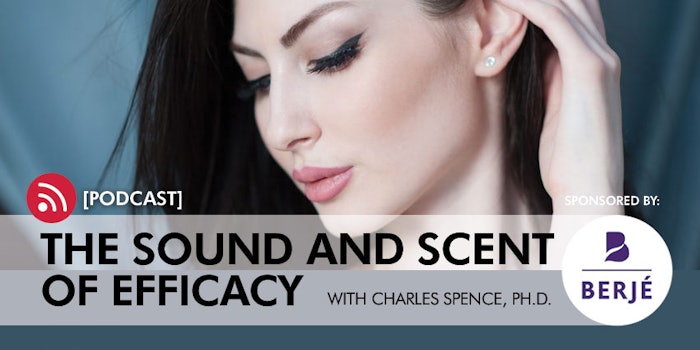
"We’ve done research over the years on topical products including skin creams, moisturizers, roll-ons and spray-on body products," says Charles Spence, Ph.D., of the University of Oxford. "[And this was fairly straightforward]; like the feel of a cream or shampoo, or whether it makes a consumer’s hair feel soft, shiny or not sticky. These are attributes the consumer enjoys or appreciates, and it leads them to buy one product over another. Yet, while the consumer will think of them as feeling the softness of hair or smoothness of skin, our research has shown that none of our experiences is just unisensory.
 "In fact, the other senses play a role. So, we’ve done some work on how dry or moist skin feels by building what’s called a parchment skin illusion. We play the sound of a microphone scraping as consumers rub their hands together. Then, in real time, we can change the sound as they rub cream into their skin so at the next moment, skin feels soft and moist instead. We know what our skin feels like but if we know that perception is multisensory, we start thinking about the role of sound. The same goes for smell."
"In fact, the other senses play a role. So, we’ve done some work on how dry or moist skin feels by building what’s called a parchment skin illusion. We play the sound of a microphone scraping as consumers rub their hands together. Then, in real time, we can change the sound as they rub cream into their skin so at the next moment, skin feels soft and moist instead. We know what our skin feels like but if we know that perception is multisensory, we start thinking about the role of sound. The same goes for smell."In this seven-part podcast series, sponsored by Berjé, world-renowned experimental psychologist Charles Spence, Ph.D., of the University of Oxford, explores sensory integration in consumer products. (Review Part I, Part II and/or Part III.) Our discussion ranges from cosmetic packaging design, fragrance and aroma, to synesthesia, digital tools and more—and how they can cue one another. Register for free, below, to hear the complete podcast.











